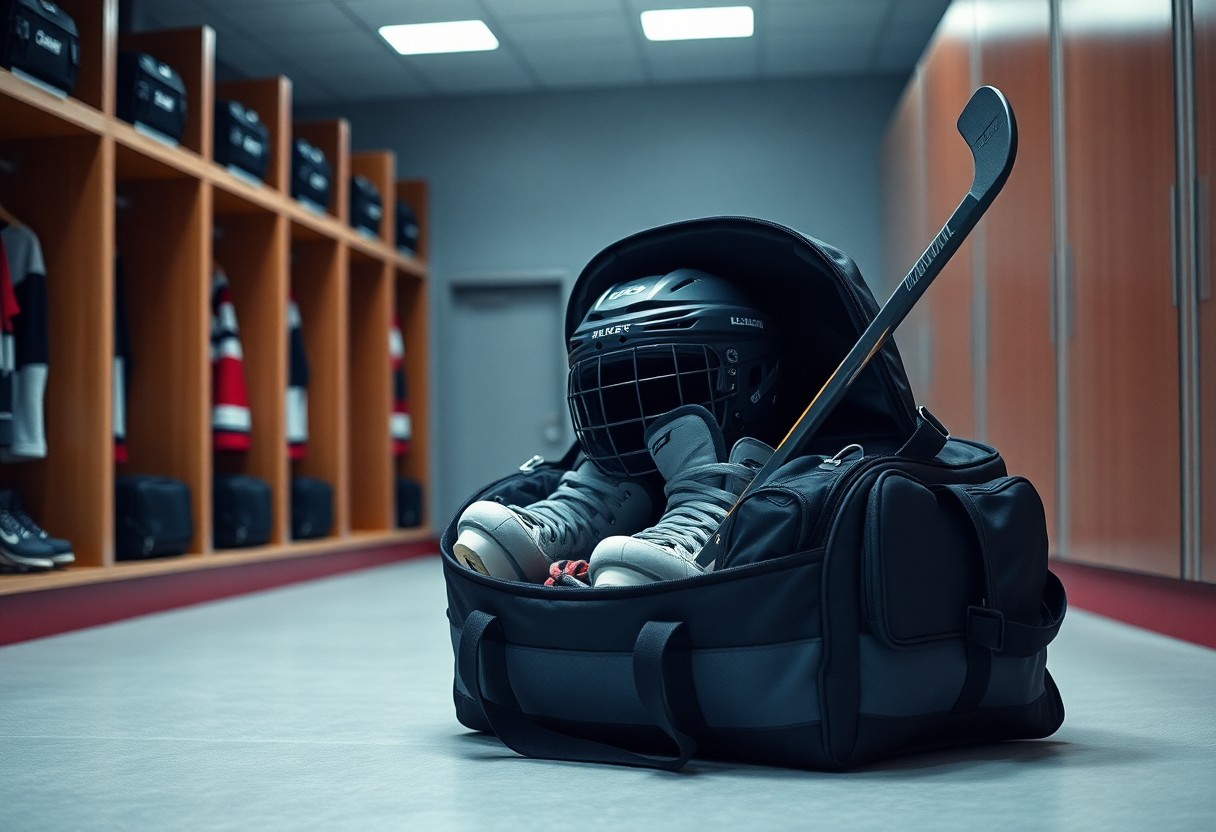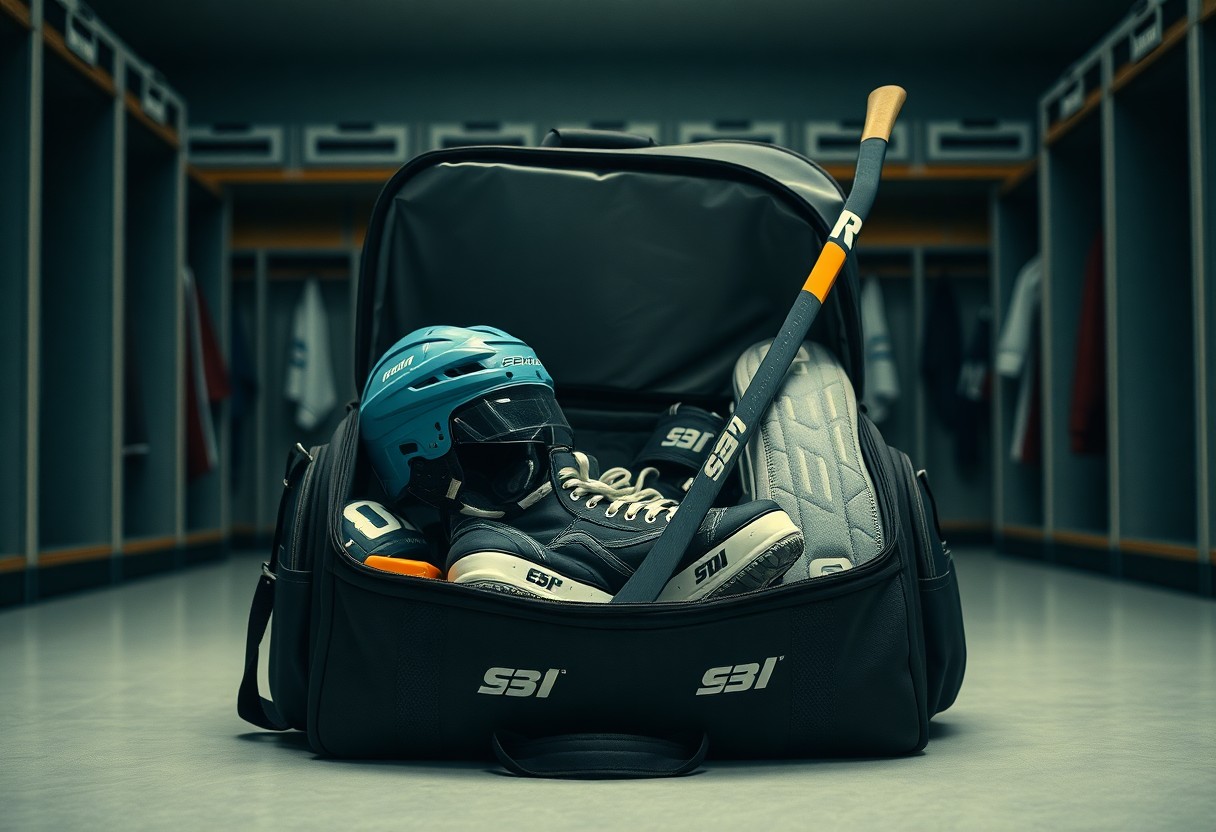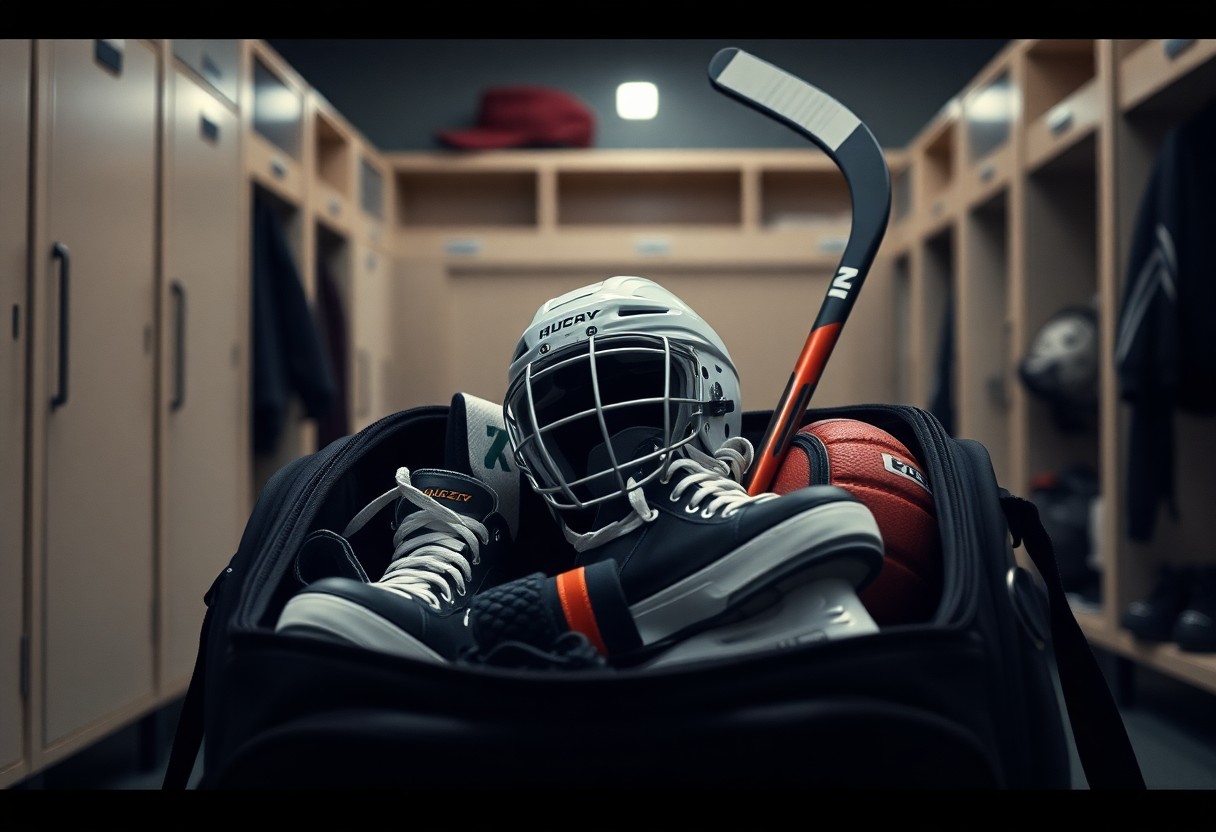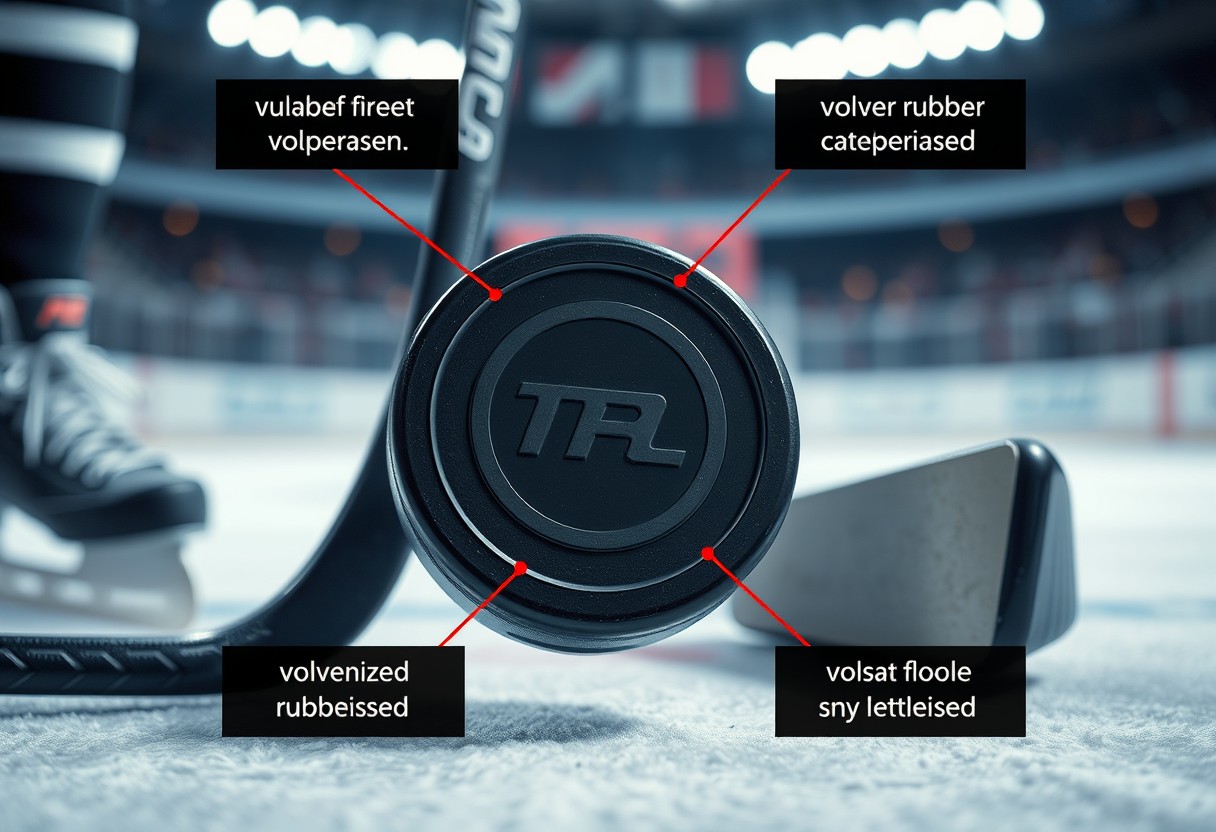Hockey equipment can be bulky and unwieldy, making packing your hockey bag an imperative skill. To ensure you have everything you need for practice or a game, a systematic approach is key. This guide will walk you through the best practices for organizing your gear efficiently, helping you maximize space and accessibility. With the right techniques, you can pack your bag like a pro, ensuring you’re prepared both on and off the ice.
Essential Gear
To effectively pack your hockey bag, it’s important to include all the vital gear that supports your performance on the ice. This includes your skates, helmet, sticks, and protective equipment. Having everything organized and easily accessible will enhance your game day experience and ensure you’re prepared for every practice and match.
Skates and Helmets
While skates provide you the necessary mobility and speed on the ice, the helmet is vital for your safety. Ensure your skates are sharpened, and your helmet is properly fitted before you hit the rink. Pack these items first, as they are some of the most important pieces of equipment you’ll need.
Sticks and Protective Equipment
Essential to your game, sticks allow you to handle the puck effectively, while protective equipment safeguards you against injuries. Make sure you have a stick that suits your playing style, whether it’s a more flexible stick for finesse or a stiffer one for powerful shots.
Protective equipment includes items like pads, gloves, and a mouthguard, all designed to absorb impacts and protect your body during play. Invest in high-quality gear that fits well and provides maximum protection without compromising mobility. When packing, place these items at the top of your bag for easy access, ensuring you’re equipped to face any challenge on the ice.

Packing Techniques
Some effective packing techniques can make a difference in how smoothly you manage your hockey gear. Consider using a systematic approach while organizing your bag, which will not only save space but also make it easier for you to locate your items quickly when you need them. Prioritize placing heavier equipment at the bottom and use every available space to ensure your bag remains balanced and manageable.
Organizing Gear Efficiently
Techniques for organizing your gear efficiently can transform your packing experience. Utilize separate compartments for different items, such as skates, pads, and jerseys. This way, you can quickly access what you need and keep your bag tidy. Additionally, consider rolling clothing instead of folding it to maximize space and reduce wrinkles.
Using Compression Bags
While packing your hockey bag, using compression bags can help save space and keep your gear organized. These bags work by eliminating excess air, allowing you to fit more items into your bag without taking up unnecessary room.
Organizing your gear with compression bags not only helps with space management but also allows for easy access to items when packed efficiently. You can use these bags for softer items like jerseys and socks, ensuring they remain wrinkle-free. Plus, they can hold moisture securely inside, preventing damp fabrics from mingling with your dry gear. By incorporating compression bags into your packing strategy, you can create a well-organized hockey bag that simplifies your game day preparations.

Tips for Optimizing Space
One effective way to ensure your hockey bag remains organized is to optimize the space you have. Consider using the following tips:
- Choose a bag with multiple compartments.
- Store smaller items in side pockets.
- Use packing cubes or small pouches.
- Keep frequently used gear easily accessible.
The right organization not only helps maximize space but also allows you to find what you need in a snap.
Rolling vs. Folding
Folding your garments neatly can save more space compared to traditional methods, but rolling can be a game changer for bulky items like jerseys and sweatshirts. Roll these items tightly to fit them into your bag without losing too much space and to prevent wrinkles. This method also allows you to layer your gear, optimizing the available room effectively.
Utilizing Empty Spaces
You can make a big difference in your bag’s organization by utilizing empty spaces intelligently. Look for gaps like the corners or spaces between larger items where smaller equipment or clothing can fit snugly. This ensures you make the most of every inch in your hockey bag.
To further enhance your packing strategy, think about using shoes or helmets to store socks or smaller belongings inside them. Additionally, if your stick bag has pockets, utilize those spaces for tape or mouthguards. By maximizing those overlooked areas, you ensure your equipment stays organized, and you enhance overall accessibility.
Maintenance Factors
Your hockey gear requires proper maintenance to ensure peak performance and longevity. By taking care of your equipment, you can avoid unexpected breakdowns or unpleasant odors. Here are some maintenance factors to keep in mind:
- Regular cleaning of your gear
- Inspecting for damage
- Drying items thoroughly
- Storing gear properly
The right maintenance will make a significant difference in your overall experience on the ice.
Cleaning Equipment Before Packing
While packing your hockey bag, it’s important to clean your equipment first. This not only prevents unpleasant odors but also removes dirt and bacteria that can lead to wear and tear. Start by giving your gear a good wipe down and utilize mild soap for stubborn stains. Ensure that all items, especially skates, shin guards, and gloves, are free of dirt and moisture to maintain their integrity and performance.
Checking for Damage
Equipment maintenance also involves checking for damage to your gear. Before you pack, take a moment to inspect your items for cracks, tears, or worn-out areas. Each component plays a vital role in your performance, and addressing any issues early can save you from expensive repairs or replacements.
It’s a good practice to assess each piece of equipment closely. Look for frayed straps, cracked shells, or punctured materials that may compromise your safety or effectiveness on the ice. Not only does this ensure you’re using reliable gear, but it also fosters a habit of regular inspections, ultimately prolonging the life of your equipment.
Travel Considerations
Many factors come into play when packing your hockey bag for travel, especially if you’re flying or using public transportation. You’ll need to think about the weight and size of your gear, how you’ll transport it, and any specific airline policies that may affect your travel plans. Proper planning can make your travel experience smoother, ensuring you arrive at your destination ready to hit the ice.
Weight Limits and Airline Policies
Assuming you are flying, it’s wise to check the weight limits and policies of your airline before packing. Many airlines have strict baggage requirements, including size restrictions and extra fees for overweight items. Knowing these details can help you pack more efficiently and avoid unexpected costs.
Local Transportation Tips
Even if you’re not flying, navigating your gear on public transport can be challenging. It’s important to organize your hockey bag in a way that makes transportation easy and efficient. Here are some helpful tips:
- Choose a hockey bag with wheels for easier maneuverability.
- Pack importants on top for quick access during transfers.
- Consider using packing cubes to separate your equipment.
- Be mindful of peak travel times to avoid crowded situations.
Thou can make your transportation hassle-free by sticking to these guidelines.
Considerations like route planning and time of day can significantly impact your travel experience. When using public transport, be aware of your surroundings and the capacity of your bag. Here are some additional tips:
- Check the schedules of trains or buses beforehand to minimize waiting times.
- Practice lifting and moving your bag to know your limits.
- Always have your tickets ready for quick access.
- Consider arranging rides with teammates when possible.
Thou will find that following these tips can enhance your travel experience and make getting to the rink more enjoyable.
Common Mistakes to Avoid
Keep an eye out for common pitfalls when packing your hockey bag. Many players fall into the trap of overpacking or misplacing their gear, which can lead to unnecessary hassle on game day. Prioritizing necessary equipment and organizing items wisely ensures you can find what you need without sifting through a cluttered bag. Avoid these mistakes for a smoother experience when hitting the ice.
Overpacking
Any player knows the temptation to pack every piece of gear, but overpacking can add unnecessary weight and complexity. Bring only what you need for the game or practice, and consider storing less frequently used items separately. This streamlined approach makes it easier to find necessary equipment quickly.
Ignoring Weight Distribution
Distribution of weight in your hockey bag greatly influences how comfortable it is to carry. If heavier items are concentrated in one area, the bag can feel awkward and cause strain on your back or shoulders. Strive to evenly distribute the weight of your gear to enhance balance and manageability, making your preparation for any game more efficient.
Plus, paying attention to how you load your bag can make a significant impact during transport. Position heavier equipment, like pads and helmets, closer to the bottom and center of the bag. This keeps the weight near your body and reduces the leverage effect that makes it harder to carry. By ensuring a well-organized and balanced setup, you not only protect your gear but also make your journey to the rink far more comfortable.
To wrap up
Drawing together the various elements of packing your hockey bag, you should ensure that you organize your equipment efficiently to facilitate easy access and maintenance. Place vital items such as your skates and stick in designated sections, while grouping smaller accessories, like mouth guards and socks, together. Utilize pockets wisely to keep your gear tidy and separated, avoiding any last-minute scrambles. By following these guidelines, you’ll be prepared for every match, ensuring that you can focus on your performance rather than your equipment.




